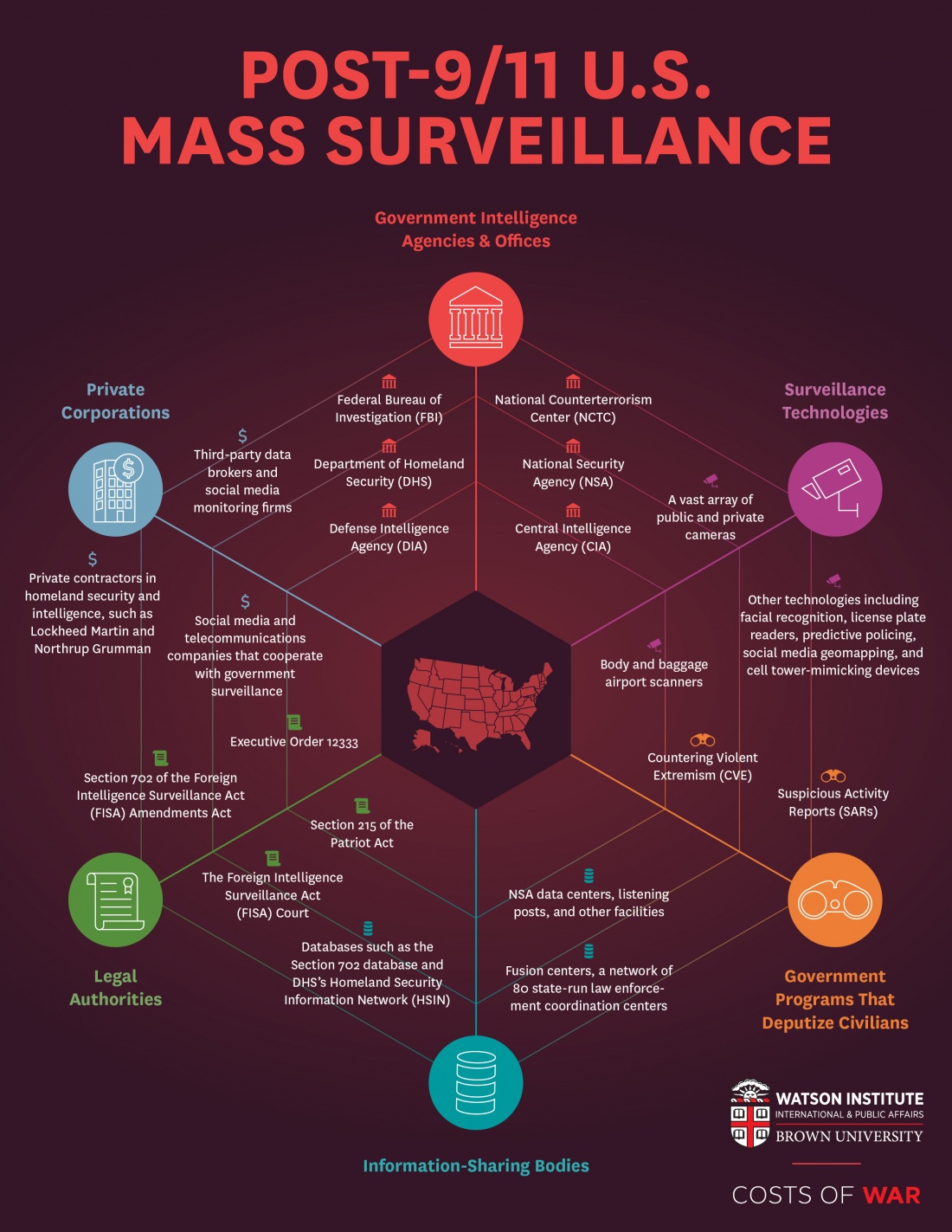Total Information Awareness: The High Costs of Post-9/11 U.S. Mass Surveillance

The United States has witnessed an explosive expansion of mass surveillance since the 9/11 attacks. This post-9/11 expansion has built on slavery, colonial occupation, and longstanding racism, as well as wartime spying and the War on Drugs. Yet it is also markedly different from what existed before, in both its technological capacities and its scale and breadth. This report illustrates how the pervasive fear, Islamophobia and xenophobia, weakened civil liberties protections, and exponentially increased funding of the post-9/11 era enabled the unprecedented breadth and scale of surveillance reigning across the United States today.
The report is as a comprehensive overview of the contemporary surveillance programs that emerged in the post-9/11 landscape and illustrates their costly ramifications. These mass surveillance programs allow the U.S. government to warrantlessly and "incidentally" vacuum up Americans' communications, metadata and content, and store their information in data centers and repositories such as the database authorized by Section 702 - a provision up for reauthorization this year. The report illustrates how federal agencies also increasingly obtain data from private companies and track Americans using facial recognition, social media geomapping, and other technologies. These efforts have particularly impacted Muslims, immigrants, and protesters for racial and labor justice, and have cost untold dollars, normalized an erosion of privacy and freedom, and entrenched an expanding surveillance infrastructure that grows ever more difficult to control.

